1. Taffarel IP, Miyoshi CS, Maruo IT, Meira TM, Tanaka OM. 2019; The periodontal benefit of orthodontic tooth movement in a deep facial recession of a mandibular incisor. Case Rep Dent. 2019:7601475. DOI:
10.1155/2019/7601475. PMID:
31781411. PMCID:
PMC6855020.

2. Nahás-Scocate AC, de Siqueira Brandão A, Patel MP, Lipiec-Ximenez ME, Chilvarquer I, do Valle-Corotti KM. 2014; Bone tissue amount related to upper incisors inclination. Angle Orthod. 84:279–85. DOI:
10.2319/031213-211.1. PMID:
23883305.

3. Renkema AM, Fudalej PS, Renkema A, Kiekens R, Katsaros C. 2013; Development of labial gingival recessions in orthodontically treated patients. Am J Orthod Dentofacial Orthop. 143:206–12. DOI:
10.1016/j.ajodo.2012.09.018. PMID:
23374927.

4. Pithon MM. 2018; Spontaneous correction of accentuated retraction of maxillary central incisors after autogenous graft in midline, mesialization, and lingual torque of incisor roots. Int J Periodontics Restorative Dent. 38(Suppl):s67–77. DOI:
10.11607/prd.2637. PMID:
29590226.

5. Christoph KM, Campbell PM, Feng JQ, Taylor RW, Jacob HB, Buschang PH. 2020; Effects of transverse bodily movements of maxillary premolars on the surrounding hard tissue. Am J Orthod Dentofacial Orthop. 157:490–502. DOI:
10.1016/j.ajodo.2018.11.022. PMID:
32241356.

6. Morais JF, Melsen B, de Freitas KMS, Castello Branco N, Garib DG, Cattaneo PM. 2018; Evaluation of maxillary buccal alveolar bone before and after orthodontic alignment without extractions: a cone beam computed tomographic study. Angle Orthod. 88:748–56. DOI:
10.2319/101117-686.1. PMID:
29911904. PMCID:
PMC8174062.

7. Antoun JS, Mei L, Gibbs K, Farella M. 2017; Effect of orthodontic treatment on the periodontal tissues. Periodontol 2000. 74:140–57. DOI:
10.1111/prd.12194. PMID:
28429487.

8. Machado AW, MacGinnis M, Damis L, Moon W. 2014; Spontaneous improvement of gingival recession after correction of tooth positioning. Am J Orthod Dentofacial Orthop. 145:828–35. DOI:
10.1016/j.ajodo.2013.05.012. PMID:
24880854.

9. Matsumoto K, Sherrill-Mix S, Boucher N, Tanna N. 2020; A cone-beam computed tomographic evaluation of alveolar bone dimensional changes and the periodontal limits of mandibular incisor advancement in skeletal Class II patients. Angle Orthod. 90:330–8. DOI:
10.2319/080219-510.1. PMID:
33378440. PMCID:
PMC8032294.

10. Sendyk M, Linhares DS, Pannuti CM, Paiva JB, Rino Neto J. 2019; Effect of orthodontic treatment on alveolar bone thickness in adults: a systematic review. Dental Press J Orthod. 24:34–45. DOI:
10.1590/2177-6709.24.4.034-045.oar. PMID:
31508705. PMCID:
PMC6733232.

11. Wang CW, Yu SH, Mandelaris GA, Wang HL. 2020; Is periodontal phenotype modification therapy beneficial for patients receiving orthodontic treatment? An American Academy of Periodontology best evidence review. J Periodontol. 91:299–310. DOI:
10.1002/JPER.19-0037. PMID:
31670836.

12. Staderini E, Guglielmi F, Cornelis MA, Cattaneo PM. 2019; Three-dimensional prediction of roots position through cone-beam computed tomography scans-digital model superimposition: a novel method. Orthod Craniofac Res. 22:16–23. DOI:
10.1111/ocr.12252. PMID:
30449070.

13. Laursen MG, Rylev M, Melsen B. 2020; The role of orthodontics in the repair of gingival recessions. Am J Orthod Dentofacial Orthop. 157:29–34. DOI:
10.1016/j.ajodo.2019.01.023. PMID:
31901274.

14. Pazera P, Fudalej P, Katsaros C. 2012; Severe complication of a bonded mandibular lingual retainer. Am J Orthod Dentofacial Orthop. 142:406–9. DOI:
10.1016/j.ajodo.2012.01.019. PMID:
22920708.

15. Farret MM, Farret MM, da Luz Vieira G, Assaf JH, de Lima EM. 2015; Orthodontic treatment of a mandibular incisor fenestration resulting from a broken retainer. Am J Orthod Dentofacial Orthop. 148:332–7. DOI:
10.1016/j.ajodo.2015.04.027. PMID:
26232842.

16. Khosravi R, Cohanim B, Hujoel P, Daher S, Neal M, Liu W, et al. 2017; Management of overbite with the Invisalign appliance. Am J Orthod Dentofacial Orthop. 151:691–9.e2. DOI:
10.1016/j.ajodo.2016.09.022. PMID:
28364892.

17. Park J, Boyd RL. Park JH, editor. 2020. TADs and Invisalign. Temporary anchorage devices in clinical orthodontics. John Wiley & Sons;Hoboken: p. 541–54. DOI:
10.1002/9781119513636.ch51.

19. Morton J, Derakhshan M, Kaza S, Li C. 2017; Design of the Invisalign system performance. Semin Orthod. 23:3–11. DOI:
10.1053/j.sodo.2016.10.001.

20. Flores-Mir C. 2019; Clear aligner therapy might provide a better oral health environment for orthodontic treatment among patients at increased periodontal risk. J Evid Based Dent Pract. 19:198–9. DOI:
10.1016/j.jebdp.2019.05.006. PMID:
31326056.

22. Lee KD, Mills CM. 2009; Bond failure rates for V-loop vs straight wire lingual retainers. Am J Orthod Dentofacial Orthop. 135:502–6. DOI:
10.1016/j.ajodo.2007.04.037. PMID:
19361737.

23. Shaughnessy TG, Proffit WR, Samara SA. 2016; Inadvertent tooth movement with fixed lingual retainers. Am J Orthod Dentofacial Orthop. 149:277–86. DOI:
10.1016/j.ajodo.2015.10.015. PMID:
26827985.

24. Bin Bahar BSK, Alkhalidy SR, Kaklamanos EG, Athanasiou AE. 2020; Do orthodontic patients develop more gingival recession in anterior teeth compared to untreated individuals? A systematic review of controlled studies. Int Orthod. 18:1–9. DOI:
10.1016/j.ortho.2019.08.025. PMID:
31685434.

25. Renkema AM, Renkema A, Bronkhorst E, Katsaros C. 2011; Long-term effectiveness of canine-to-canine bonded flexible spiral wire lingual retainers. Am J Orthod Dentofacial Orthop. 139:614–21. DOI:
10.1016/j.ajodo.2009.06.041. PMID:
21536204.

26. Katsaros C, Livas C, Renkema AM. 2007; Unexpected complications of bonded mandibular lingual retainers. Am J Orthod Dentofacial Orthop. 132:838–41. DOI:
10.1016/j.ajodo.2007.07.011. PMID:
18068606.

27. Simon M, Keilig L, Schwarze J, Jung BA, Bourauel C. 2014; Forces and moments generated by removable thermoplastic aligners: incisor torque, premolar derotation, and molar distalization. Am J Orthod Dentofacial Orthop. 145:728–36. DOI:
10.1016/j.ajodo.2014.03.015. PMID:
24880843.

28. Haouili N, Kravitz ND, Vaid NR, Ferguson DJ, Makki L. 2020; Has Invisalign improved? A prospective follow-up study on the efficacy of tooth movement with Invisalign. Am J Orthod Dentofacial Orthop. 158:420–5. DOI:
10.1016/j.ajodo.2019.12.015. PMID:
32620479.

29. Levrini L, Mangano A, Montanari P, Margherini S, Caprioglio A, Abbate GM. 2015; Periodontal health status in patients treated with the Invisalign® system and fixed orthodontic appliances: a 3 months clinical and microbiological evaluation. Eur J Dent. 9:404–10. DOI:
10.4103/1305-7456.163218. PMID:
26430371. PMCID:
PMC4569994.

30. White DW, Julien KC, Jacob H, Campbell PM, Buschang PH. 2017; Discomfort associated with Invisalign and traditional brackets: a randomized, prospective trial. Angle Orthod. 87:801–8. DOI:
10.2319/091416-687.1. PMID:
28753032.

31. Tepedino M, Paoloni V, Cozza P, Chimenti C. 2018; Movement of anterior teeth using clear aligners: a three-dimensional, retrospective evaluation. Prog Orthod. 19:9. DOI:
10.1186/s40510-018-0207-3. PMID:
29607469. PMCID:
PMC5879033.

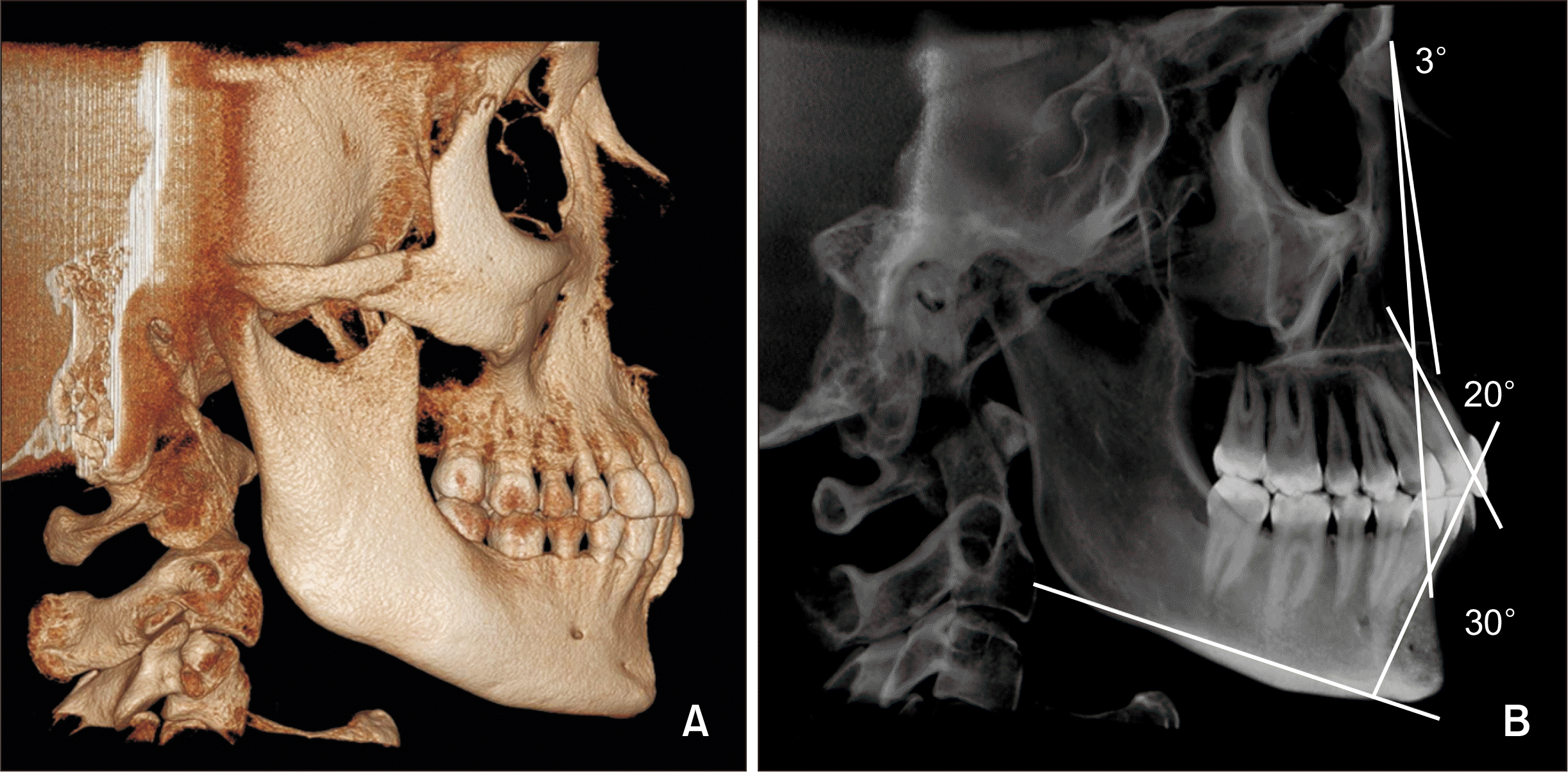
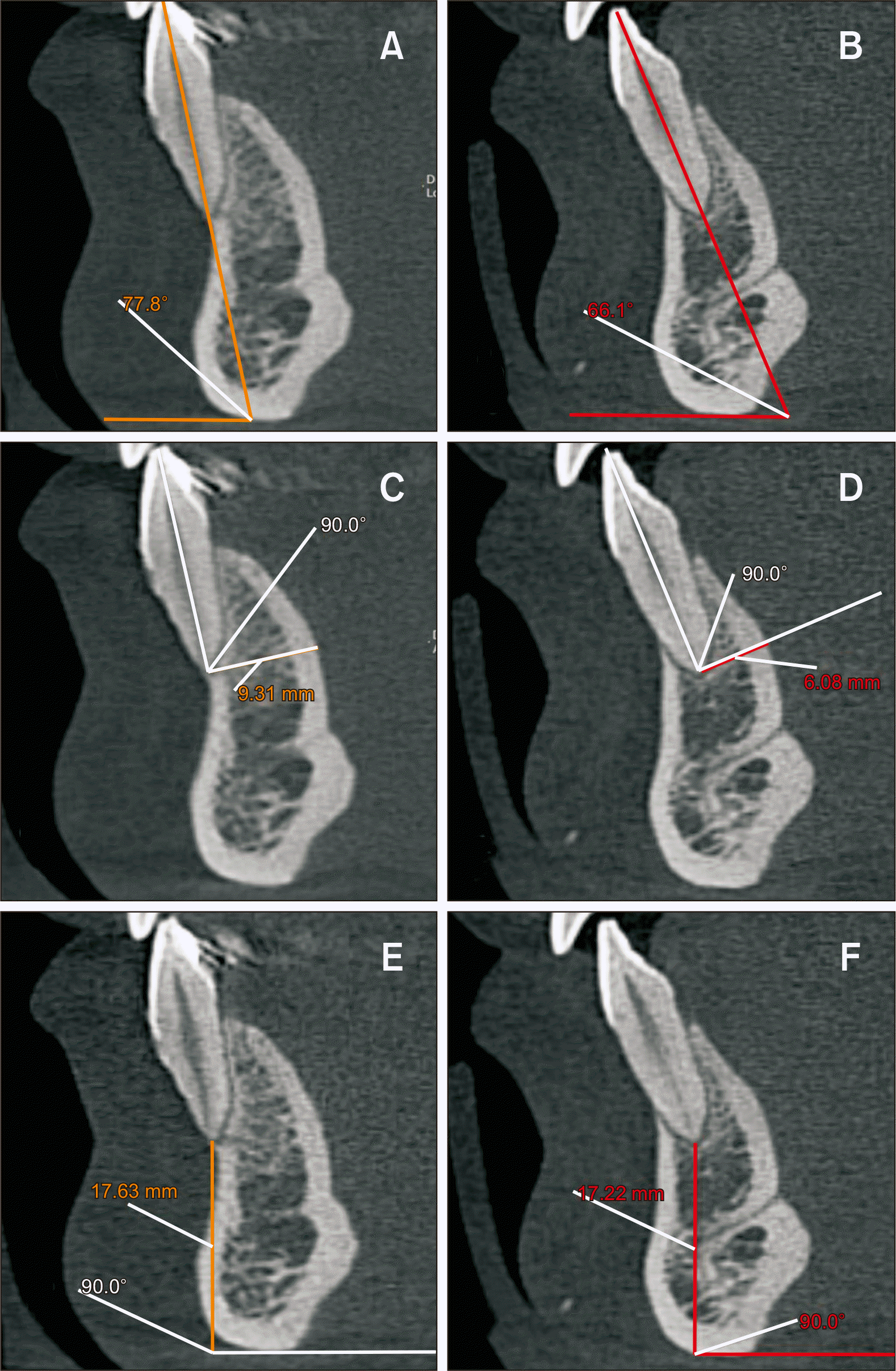




 PDF
PDF Citation
Citation Print
Print




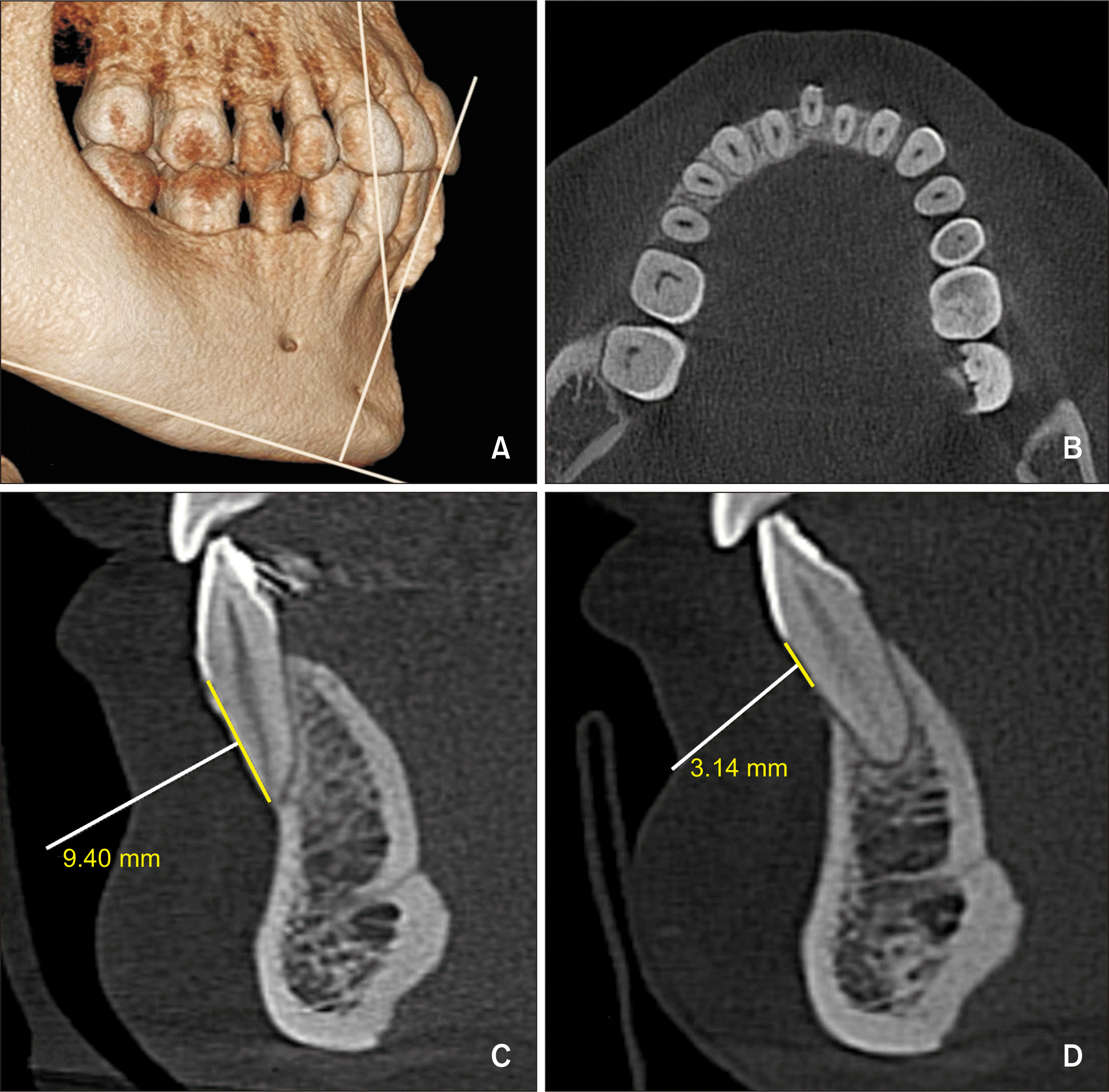
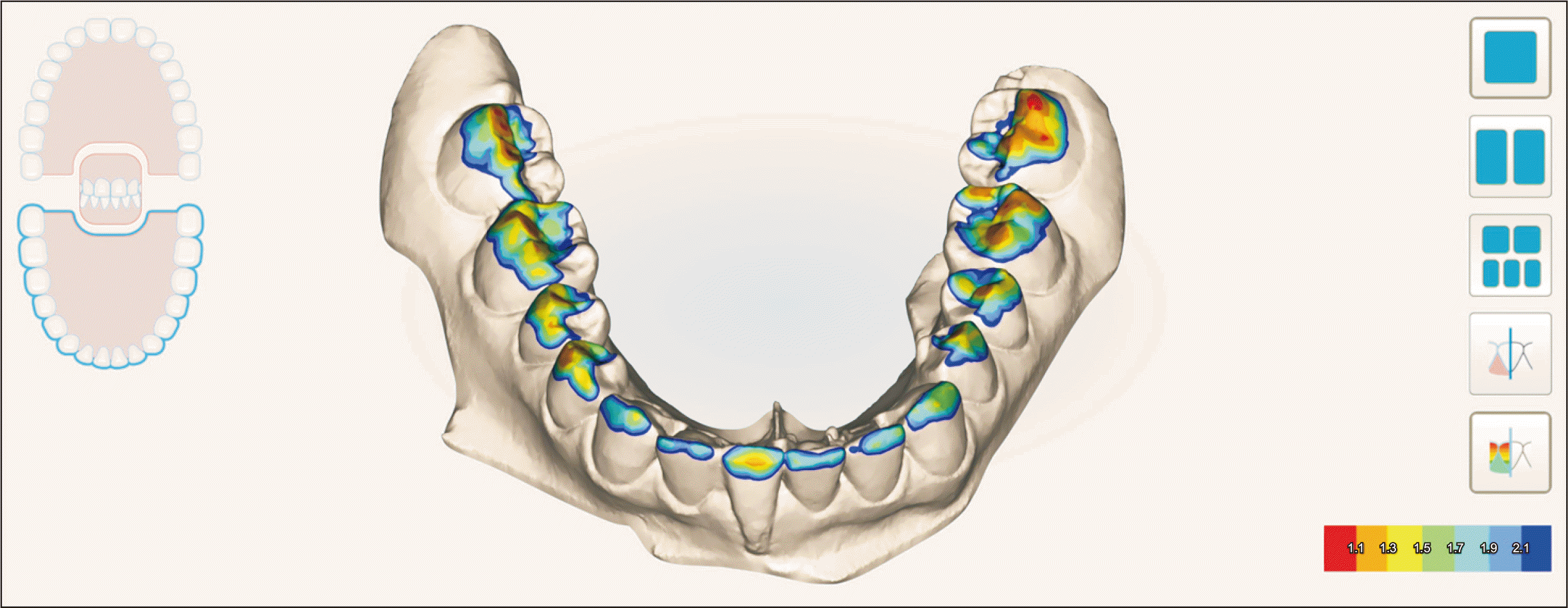
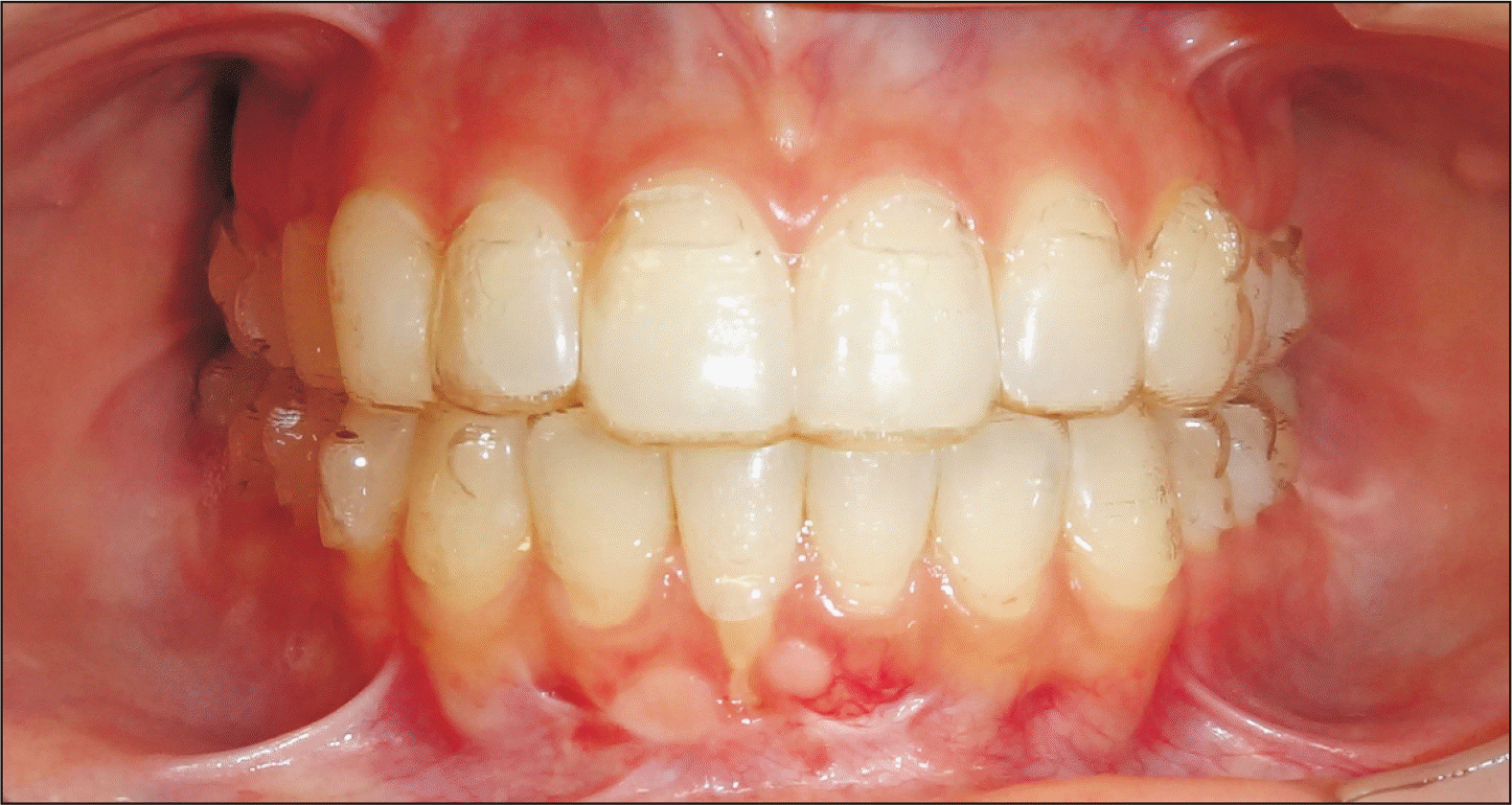
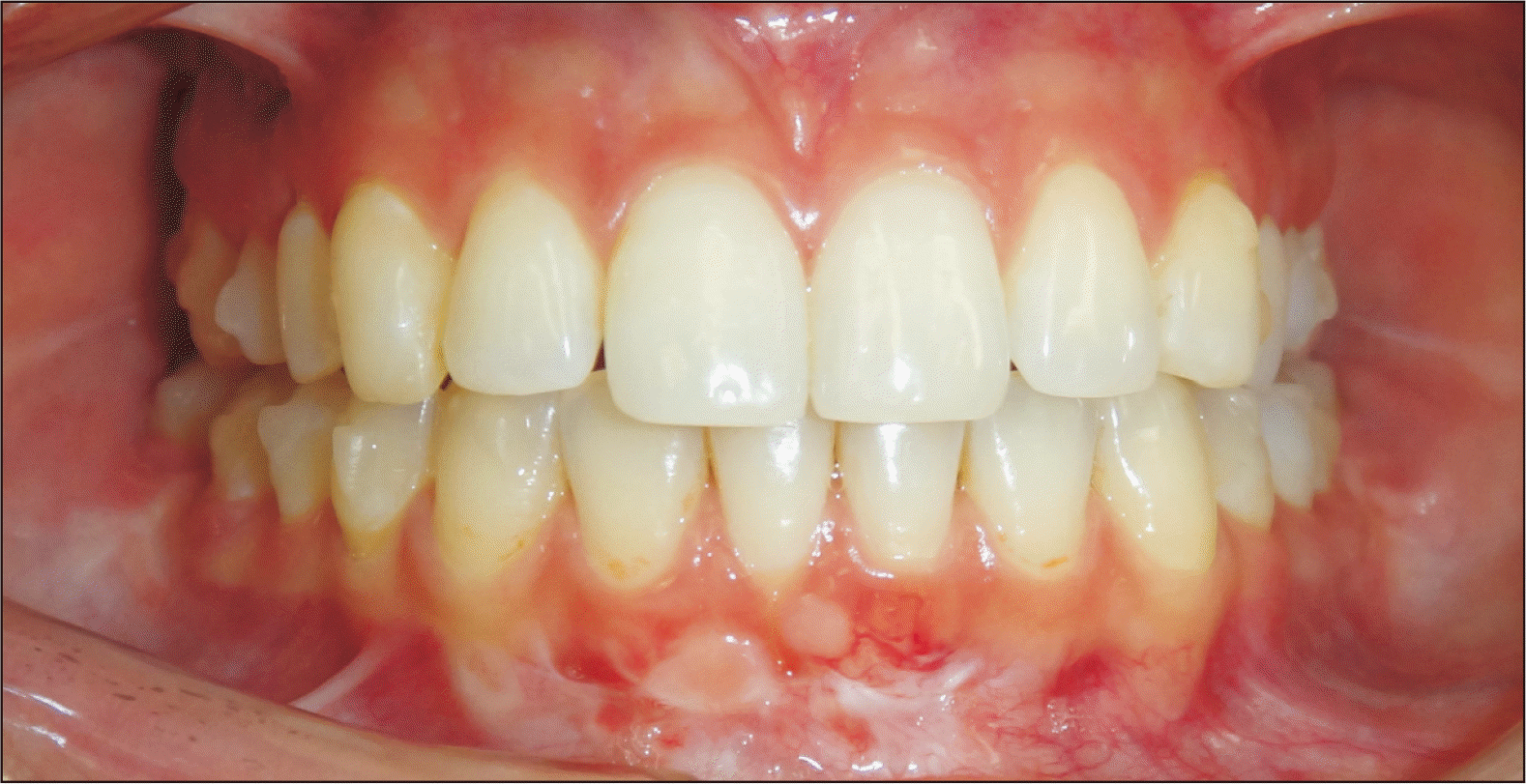
 XML Download
XML Download